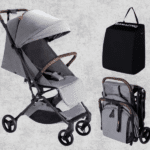Fast fashion is a disruptive force in the global retail industry, and New York City, one of the fashion capitals of the world, is no exception. With rapid shifts in consumer preferences, innovations in technology, and growing concerns over sustainability, the fast fashion phenomenon is set to reshape New York’s retail landscape in significant ways. Below, we explore the major trends and challenges driving this change.
Changing Consumer Preferences
One of the most significant drivers behind fast fashion’s success is the shift in consumer preferences. New York shoppers, like many others around the world, are increasingly drawn to affordable, trendy items. Fast fashion brands such as Zara, H&M, and SHEIN thrive on the ability to quickly replicate runway styles at a fraction of the price. As consumers seek out “in-the-moment” fashion without the high cost of luxury brands, fast fashion becomes an appealing option.
The rise of social media, particularly platforms like Instagram and TikTok, has amplified this demand for constant style updates. New Yorkers, who are often trendsetters, are no longer content with seasonal collections; they want new looks every week, if not daily.
Sustainability Concerns
Despite its popularity, fast fashion faces increasing scrutiny due to its environmental impact. New York, as a progressive and environmentally conscious city, is witnessing a growing movement among consumers advocating for more sustainable practices in the fashion industry. However, fast fashion’s model of high-volume, low-cost production is inherently at odds with sustainability efforts.
Brands are responding by exploring eco-friendly materials, recycling programs, and sustainable collections. For example, H&M’s “Conscious” collection promotes the use of organic cotton and recycled fabrics. Still, the challenge lies in balancing affordability with the growing consumer demand for sustainability. New York’s influential role could pressure fast fashion retailers to innovate further in this area.
Tech-Driven Innovation
Technology is another crucial factor influencing fast fashion in New York. With the integration of artificial intelligence (AI) and machine learning, retailers are improving their supply chain management and predicting fashion trends with unprecedented accuracy. Brands can now gather real-time data on consumer preferences and optimize their stock accordingly, ensuring that stores and e-commerce platforms are always stocked with the latest trends.
Furthermore, the rise of virtual fitting rooms, augmented reality (AR) experiences, and AI-based styling services is enhancing the customer experience, especially in a bustling city like New York, where convenience is key. These technologies not only attract a tech-savvy urban crowd but also reduce returns by helping consumers make better purchasing decisions.
Pop-Up Stores and Experiential Retail
Pop-up stores are gaining traction in New York as a key strategy for fast fashion brands. These temporary retail spaces allow companies to generate buzz and offer exclusive collections without the long-term commitment of a permanent store. Pop-up shops also create a sense of urgency, encouraging impulse buying among consumers who fear missing out on limited-time offers.
Fast fashion brands are increasingly utilizing pop-ups to showcase collaborations with influencers or designers, tapping into New York’s love for exclusive, one-of-a-kind fashion experiences.
Economic Impact
Fast fashion’s impact on New York’s economy is multifaceted. On one hand, it boosts the retail sector by creating jobs, filling commercial spaces, and driving foot traffic in shopping districts. On the other hand, rising rents in the city are pushing some fast fashion retailers to rethink their brick-and-mortar strategies, focusing more on e-commerce.
Additionally, the fast fashion model’s reliance on overseas production has been subject to disruptions, such as the recent global supply chain crisis. Brands are exploring ways to mitigate these risks, including local production and diversifying supply chains. This could create new opportunities for local manufacturers in New York, but it also presents challenges in maintaining the low costs associated with fast fashion.
Supply Chain Disruptions
The COVID-19 pandemic exposed vulnerabilities in global supply chains, particularly for industries reliant on fast turnaround times, like fast fashion. In New York, where consumer demand for fashion is constant, any disruption in supply can have significant repercussions.
Brands are now focusing on creating more resilient supply chains by diversifying their production locations and incorporating more flexible inventory systems. Some are even looking into nearshoring or reshoring production to avoid future disruptions. In a fast-paced market like New York, where trends can change overnight, supply chain agility will be key to maintaining a competitive edge.
Fashion Influencers and Collaborations
Influencers play a crucial role in fast fashion’s success, especially in trend-driven cities like New York. Collaborations between brands and influencers create a buzz and offer limited-edition collections that can sell out within hours. These partnerships not only enhance a brand’s visibility but also provide credibility and allure among younger consumers.
New York’s position as a global media hub makes it an ideal testing ground for these influencer-driven campaigns. Brands are increasingly looking to influencers with strong ties to the city’s culture, whether it’s through street style, music, or the arts.
Evolving Business Models
Finally, fast fashion brands are evolving their business models to remain competitive in New York’s dynamic retail scene. Some are embracing direct-to-consumer (D2C) strategies to reduce costs and improve customer relationships, while others are focusing on a hybrid model, balancing online sales with a physical retail presence.
Subscription-based models, rental services, and buy-now-pay-later (BNPL) options are also gaining traction, offering consumers more flexibility in how they shop. As the retail landscape continues to evolve, fast fashion brands will need to adapt quickly to meet the needs of New York’s ever-changing market.
Fast fashion is set to rock the New York retail scene by catering to changing consumer preferences, leveraging technology, and navigating the challenges of sustainability and supply chain disruptions. While the industry faces growing criticism over its environmental impact, fast fashion brands are innovating to remain relevant in a city known for its fashion-forward consumers. As New York continues to be a trendsetter in global fashion, the fast fashion sector will undoubtedly play a significant role in shaping the future of retail.



















